Housing and culture as drivers of urban transformation
A field visit to inspiring initiatives in North Rhine-Westphalia
Gelsenkirchen, 28 November 2017 | Social, Urban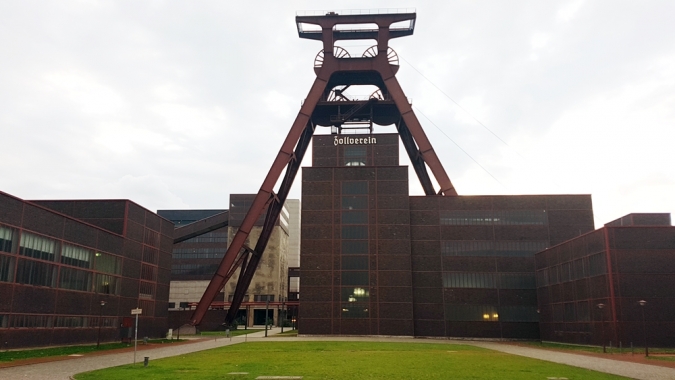
Housing Europe Communications Director, Michalis Goudis took part in one of these year’s International Visitors’ Programmes organized by the North Rhine-Westphalian (NRW) Office of Culture (NRW KULTURsekretariat) and had the chance for a number of field visits in Germany’s most populous state. Michalis reports how investment in affordable housing and in culture can be the drivers for the transformation of a place that has left its glorious industrial past behind.
Text & Pictures by Michalis Goudis
Once considered the locomotive of industrial development not just in Germany but across Europe the Ruhr region has started undergoing a major transformation in the second half of the 20th century that is still unfolding. With a population density of 2,800/km² and a population of 8.5 million, it is the largest urban area in Germany, and third-largest in the European Union. Coal and the industry around attracted millions of people in the Ruhr Valley, where in 1850 there were almost 300 coal mines in operation. Today, just one pit is still active and the goal is for the area to stop operations in 2018 when also financial subsidies will be cut. How a region that much dependent on this kind of activities move to a new era?
Focusing just on the last years of such a long process that had started already from the 1960s onwards- since then, the coal and steel enterprises became increasingly unprofitable and were gradually decommissioned- one who visits Essen, Gelsenkirchen, Bochum and the other cities of the region may immediately recognise the key role of culture and housing in the regeneration of the Ruhr urban environment.
Change through culture – culture through change
A key milestone for the Ruhr area was the title of the European Capital of Culture 2010. With the motto “Change through culture – culture through change” hundreds of museums, theatres, concert venues, festivals and industrial monuments along with a packed programme of activities drew approximately ten million visitors in Ruhr but far more important has been the legacy. The valuable legacy of this occasion was that the region better understood its cultural capital, activating the whole of its potential but also, if not mainly, by branding itself in a more attractive way towards the young population that had been leaving the area for a while.
The projects ran by Urbane Künste (Arts in Urban Space) Ruhr are a very tangible example of how culture has been closely linked with the change in the urban space all over the Ruhr District. According to the Founding Curator, Katja Aßmann “Urbane Künste Ruhr can be summed up as a large-scale, long-term experiment […]” that makes the link between visual art, the performing arts and urban development. Since 2012 46 art projects, including a Triennale, with 263 artists and curators and 85 cooperating partners in 31 municipalities in the Ruhr region showcased how “artworks in urban space have the power to change the entire Ruhr region long-term”, writes Aßmann in the overview report Urbane Künste have published over summer.
However, the true embodiment of structural change in the Ruhr metropolis is the Zeche Zollverein. A UNESCO World Heritage site the Zollverein Coal Mine Industrial Complex is undoubtedly one of the most impressive industrial monuments in Europe. Since the last working shift in 1986, Zollverein has been transformed into a prime site for art, culture and creative sectors attracting around two million visitors each year. Walking around the grandiose complex with the dominant red brick walls and the unique Modern Movement architectural designs the visitor also stops in front of the building that hosts the Arts School of Folkwang University that adds education to the equation, too.
Housing unlocks the potential
On a dark cloudy morning last September, as part of group of journalists invited by the North Rhine-Westphalian Office of Culture we visited Gelsenkirchen. There, urban renewal is a major challenge and the main task of SEG (Stadterneuerungsgesellschaft Gelsenkirchen) that aims to revaluate several districts of the city, especially those suffering from a high vacancy rate. The municipal company purchases and modernises dwellings, converting them into affordable housing units but also into accessible places for citizens, associations, young people and artists. It’s been already a few years since they have started their fight against bad reputation that feeds segregation.
Helga Sander, a Geographer in background, has been leading this complicated mission. She explains that the focus of their work are streets such as the historical Bochumer Strasse in the traditional worker’s neighbourhood where they try to combine affordable housing with social services and creative economy. The overall quarter under the name Ückendorf has therefore been the center of action for one of the so-called ‘Creative Quarters of NRW’. Here, vacant properties are used for the settlement of various artistic and cultures ventures such as galleries, pop up shops and others. Furthermore, the new mobile kindergarten and the youth centre has already received positive feedback from the local community.
Seeing the municipal administration as a long-term stable anchor for urban development, this initiative by State of North Rhine-Westphalia in cooperation with the European Centre for Creative Economy (ecce) brings together the departments of culture, economy and urban planning in a strategic cooperation. This scheme of collaboration is another derivative of the ‘European Capital of Culture RUHR.2010’.
The semiotics of Bochumer Strasse has actually inspired the artistic project ‘Bochumer Strasse spricht (speaks)’ took place within the framework of activities of the Artists’ Settlement Halfmannshof, a historical co-working and residency space from and for artists in Gelsenkirchen and beyond. 47 art students came up with their own installations, videos, photos etc. aiming to illustrate the diversity of the street and to give it a new meaning and value, putting in the centre one key question that is in the minds and hearts of most people of the street ‘should I stay or should I go’, as Cultural Manager, Christiana van Osenbrüggen highlights.
In the melting pot of Gelsenkirchen, where one may find 35 nationalities among 4,000 people Mrs. Sander identifies two big urban planning problems: “on the one hand we have a lot of empty spaces in the areas where the mines have closed while on the other hand there is a lack of manpower and therefore purchasing power”. How does one address these challenges?
To manage the housing situation in a better way SEG works together with the local cooperative, GGW that has more than 60 years of experience in the housing market and a stock of around 4,800 homes. The City of Gelsenkirchen holds 100% of the shares in GGW and implements through this platform its housing policy and planning goals.
Empty properties may have started filling up by 40 to 50% but they still constitute a complicated issue to handle in Gelsenkirchen. SEG may be willing to offer tax incentives to private owners who would invest in renovating empty properties to offer them at an affordable rental price, but has to also face those who make use of a certain option provided by legislation to bid for empty flats at low rate obliged just to pay 10% in the first place. By overcrowding poor parts of the migrant population over six months they make so much money that they take control of key parts of the market, raising obstacles to the SEG strategy.
By the time the bus brings us back to the city centre of Essen, the sun has begun to set adding a nice deep red and a touch of optimism to the colour palette of the sky. The radical transformation of such a special and vast area is not a simple task. However, the plan is there, the work has already started and the results so far are more than encouraging. One should definitely come back to Ruhr over the next few years. There will be a lot to learn from.
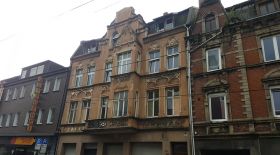
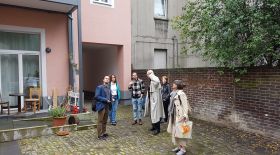
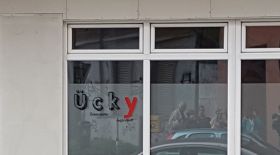
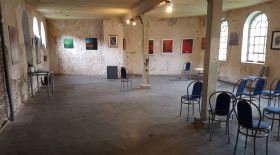
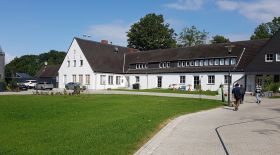
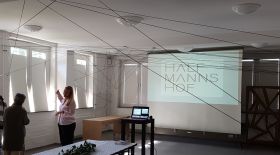
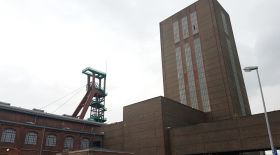
Leave comments